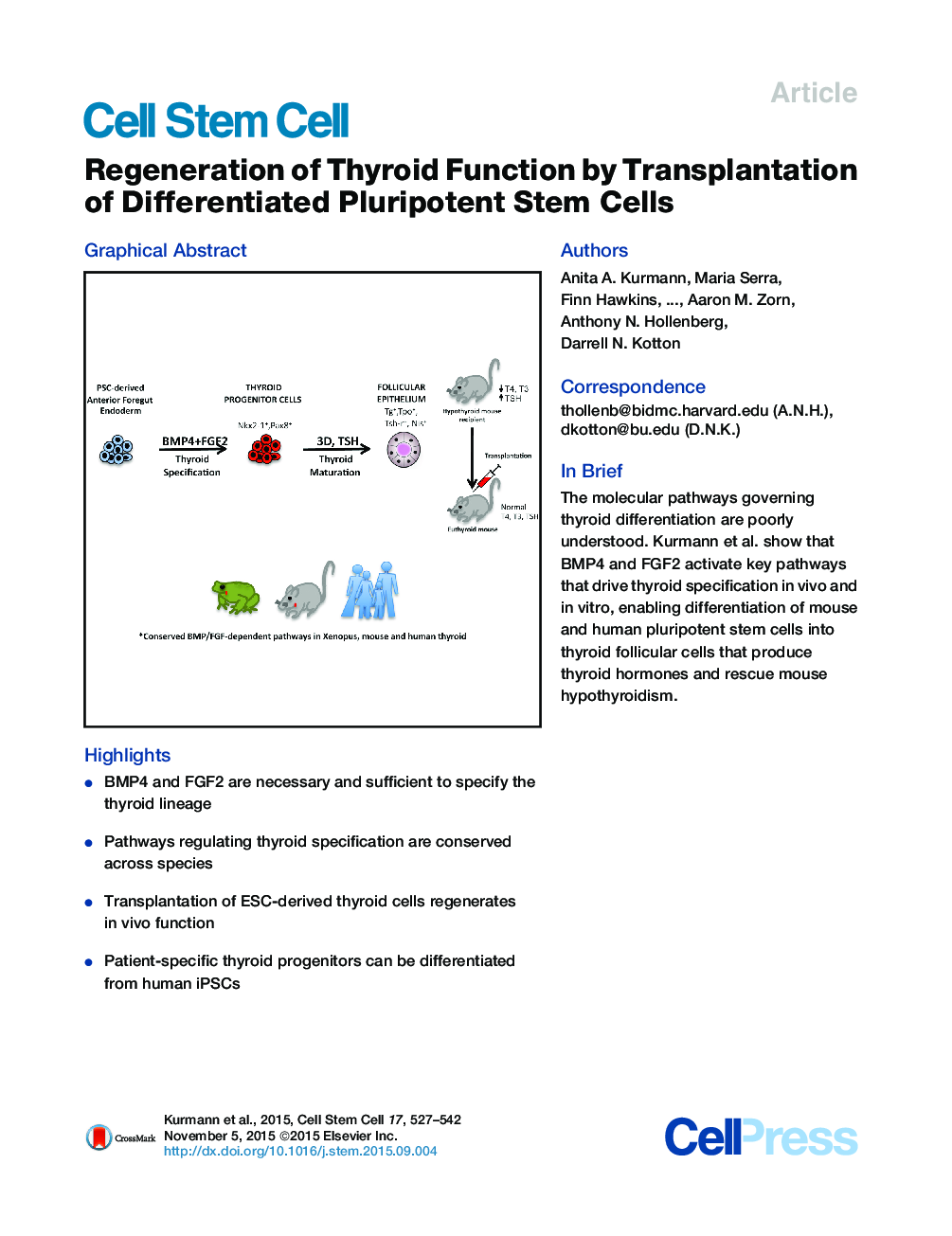| Article ID | Journal | Published Year | Pages | File Type |
|---|---|---|---|---|
| 2077245 | Cell Stem Cell | 2015 | 16 Pages |
•BMP4 and FGF2 are necessary and sufficient to specify the thyroid lineage•Pathways regulating thyroid specification are conserved across species•Transplantation of ESC-derived thyroid cells regenerates in vivo function•Patient-specific thyroid progenitors can be differentiated from human iPSCs
SummaryDifferentiation of functional thyroid epithelia from pluripotent stem cells (PSCs) holds the potential for application in regenerative medicine. However, progress toward this goal is hampered by incomplete understanding of the signaling pathways needed for directed differentiation without forced overexpression of exogenous transgenes. Here we use mouse PSCs to identify key conserved roles for BMP and FGF signaling in regulating thyroid lineage specification from foregut endoderm in mouse and Xenopus. Thyroid progenitors derived from mouse PSCs can be matured into thyroid follicular organoids that provide functional secretion of thyroid hormones in vivo and rescue hypothyroid mice after transplantation. Moreover, by stimulating the same pathways, we were also able to derive human thyroid progenitors from normal and disease-specific iPSCs generated from patients with hypothyroidism resulting from NKX2-1 haploinsufficiency. Our studies have therefore uncovered the regulatory mechanisms that underlie early thyroid organogenesis and provide a significant step toward cell-based regenerative therapy for hypothyroidism.
Graphical AbstractFigure optionsDownload full-size imageDownload high-quality image (142 K)Download as PowerPoint slide
